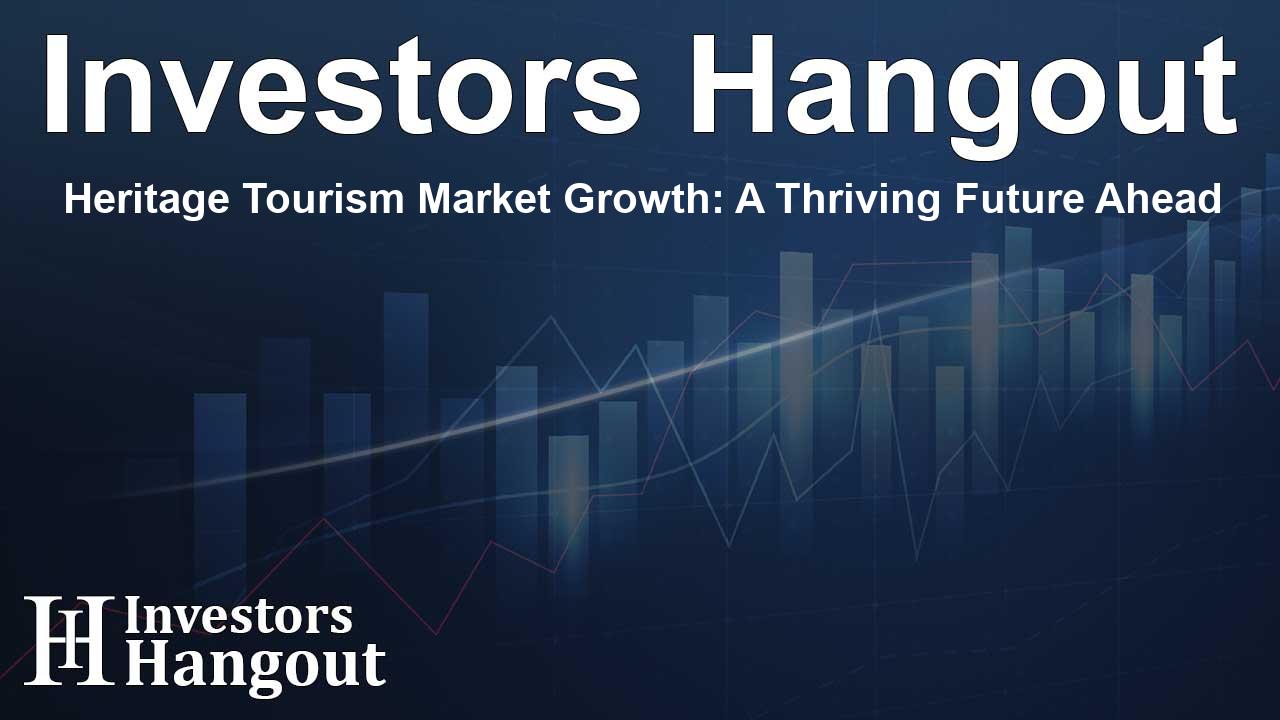Heritage Tourism Market Growth: A Thriving Future Ahead

The Future of Heritage Tourism: A Booming Market
There is an undeniable momentum growing within the heritage tourism sector, which was assessed at a value of approximately $607.35 billion not too long ago. As we look ahead, experts anticipate this vibrant market will reach an impressive valuation of about $903.36 billion, aided by a consistent growth rate poised at 4.51% from now until 2033.
Understanding the Dynamics of Heritage Tourism
Heritage tourism has emerged as a crucial player in the global travel industry, showcasing an invigorating blend of culture and economics. As we delve deeper into the data from recent years, it becomes clear that this sector thrives on an ever-growing desire for authentic experiences. The total receipts from global tourism hit a staggering $1.6 trillion, with heritage tourism reaping a significant share of this bounty.
Market Contributions and Visitor Engagement
The numbers speak volumes about the sector's vitality. The influx of visitors exploring cultural sites exemplifies a reviving spirit of interest in authentic historical narratives. The yearning for cultural engagement is driving people to iconic destinations, supporting job creation and local economies, and preserving our heritage.
Key Insights from the Heritage Tourism Market
This is not simply a niche market; it is a transformative force for sustainable economic development. During an in-depth analysis, we discover various critical performance indicators such as the dominant demographics and the preferred booking channels among travelers.
Visitor Trends and Demographics
Currently, travelers aged 51 to 70 represent a significant portion of this market, making up roughly 61% of visitors. Meanwhile, offline booking channels are preferred by about 71% of tourists, emphasizing the ongoing relevance of personalized travel experiences over solely digital engagements.
Challenges and Opportunities
Despite the promising outlook, the market also faces certain challenges. There’s a pressing need to balance the preservation of cultural sites with the rising volume of visitors. Meanwhile, traditional tour operators face hurdles in adopting new technologies to meet excursions' evolving demands.
A New Era of Exploration
The current landscape of global tourism emphasizes a significant shift toward understanding and appreciating various cultural heritages. With around 1.4 billion travelers reported on the move last year, cultural tourism is taking center stage. Countries like Ireland, with over 13.8 million visitors flocking to heritage sites, and the UK showcasing nearly 20 million visits to independent museums play a crucial role in this reviving trend.
Regional Highlights in Heritage Attraction
Focusing on Europe, we see how heritage tourism flourishes. Greece continues to allure over 20 million visitors to its ancient sites, including the famed Acropolis, which alone drew over 4.5 million tourists in a short span. Likewise, Türkiye has attracted nearly 14 million visitors to its cultural treasures, showcasing the vital contributions each region makes to the overall market vitality.
The Economic Impact of Heritage Tourism
Heritage tourism is more than a source of fascination. It represents a substantial economic engine, injecting billions into local economies worldwide. Museums alone contribute immensely to national income, such as a notable $50 billion annually in the United States.
Employment Opportunities Created
This market is also a formidable force for job creation. In the U.S., museums directly and indirectly support more than 726,000 jobs, benefiting numerous communities. Investing in cultural and heritage tourism yields substantial returns, with various studies indicating that every dollar spent in this sector generates significantly more in economic activity.
Looking Ahead: Future Trends in Heritage Tourism
The path ahead is bright for the heritage tourism industry. As governments invest in tourism-related projects, including enhancements to existing cultural institutions, the market is bound to deepen its roots. Increased collaborations, educational initiatives, and community involvement will likely facilitate continuous growth and engagement.
Key Segmentation of the Market
In understanding what drives this lucrative sector, we see that it is further defined by preferences regarding heritage types, booking channels, and regional distinctions. Cultural heritage remains the predominant type, representing a large slice of this expanding market.
Frequently Asked Questions
What is the expected market size of heritage tourism by 2033?
The heritage tourism market is anticipated to reach approximately $903.36 billion by 2033.
Which demographic is showing the highest engagement in heritage tourism?
Travelers aged 51 to 70 are leading the way, constituting around 61% of the visitor demographic.
What are the dominant booking channels for heritage tourism?
Offline channels, comprising 71% of bookings, remain the preferred choice for many travelers.
Which regions are most engaged in heritage tourism?
Regions such as Asia Pacific and Europe are highlighted for their significant contributions to the heritage tourism market.
What economic impact does heritage tourism have?
Heritage tourism contributes billions to local economies and supports hundreds of thousands of jobs, making it a vital sector.
About The Author
Contact Ryan Hughes privately here. Or send an email with ATTN: Ryan Hughes as the subject to contact@investorshangout.com.
About Investors Hangout
Investors Hangout is a leading online stock forum for financial discussion and learning, offering a wide range of free tools and resources. It draws in traders of all levels, who exchange market knowledge, investigate trading tactics, and keep an eye on industry developments in real time. Featuring financial articles, stock message boards, quotes, charts, company profiles, and live news updates. Through cooperative learning and a wealth of informational resources, it helps users from novices creating their first portfolios to experts honing their techniques. Join Investors Hangout today: https://investorshangout.com/
The content of this article is based on factual, publicly available information and does not represent legal, financial, or investment advice. Investors Hangout does not offer financial advice, and the author is not a licensed financial advisor. Consult a qualified advisor before making any financial or investment decisions based on this article. This article should not be considered advice to purchase, sell, or hold any securities or other investments. If any of the material provided here is inaccurate, please contact us for corrections.
